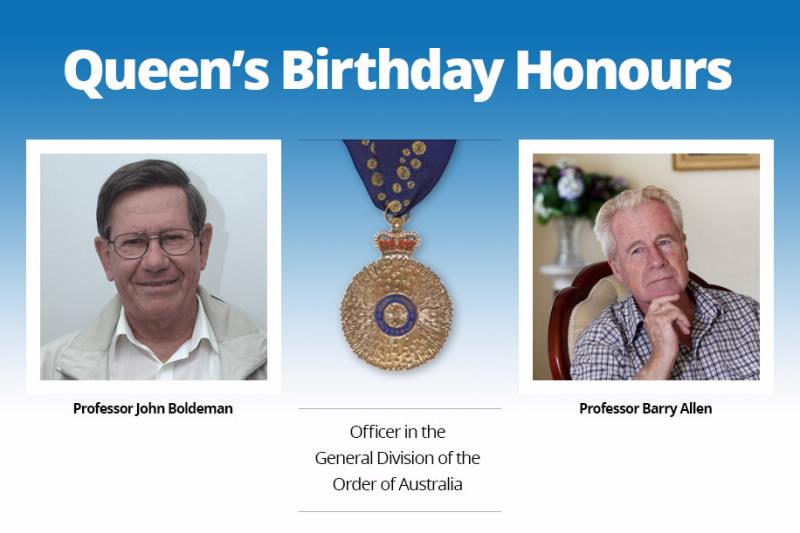

Published on the 9th June 2015 by ANSTO Staff
After decades of work with ANSTO and its predecessors and partners, Professor John Boldeman and Professor Barry Allen have been made Officers of the Order of Australia.

This recognition follows Professor Boldeman’s and Professor Allen’s decades of distinguished service to the nuclear science and technology industry and nuclear medicine.
Prof Boldeman, who has a long association with ANSTO, was recognised for distinguished service to nuclear science and technology, particularly through the design and construction of the Australian Synchrotron particle accelerator, and as a mentor of young scientists.
Prof Allen, who was Chief Research Scientist at ANSTO from 1964-1994, was recognised for distinguished service to biomedical physics, particularly to radiation oncology and the development of innovative methods of cancer treatment, and to international professional scientific associations.
Prof John Boldeman:
Prof John Boldeman started working at the (then) Australian Atomic Energy Commission on 23 April 1960, just two years after HIFAR first went critical and the same year it was first run at full power.
In one of his first roles he worked on the nuclear fission process and took measurements of neutron cross sections. These measurements were carried out on the 3 MV Van de Graaff accelerator and the nuclear reactor Moata. He also contributed to studies of the characteristics of HIFAR
He continued this work through the 1970s and then started to work on programs to source improved facilities for Australian science and industry.
This work culminated at the end of 1988, when he found a second-hand accelerator at Rutgers University which was in a poor state of repair (or as a co-worker said at the time, ‘a heap of junk’).
Regardless, Boldeman purchased it at a steal, and after much work it became ANSTO’s much loved ANTARES accelerator, which has performed countless world class experiments.
Then in 1989 he was asked by the Australian Science and Technology Council to evaluate what big science facilities Australia really needed.
A $100,000 grant from the then Federal Government started a process culminating in the siting and construction of the Australia Synchrotron in Melbourne.
Today the Synchrotron is a valued partner for industry, the university sector and government, enabling advanced materials, agriculture, biomedics, environmental, food, mining and nanotechnology research.
Boldeman’s lead role included promoting it within government and the research community, designing the synchrotron itself, and choosing the insertion devices, and it is for this work, in particular, he was recognised with an AO.
“While no one initially thought we could have a high performance synchrotron, I did. said Boldeman. “It is interesting what can result if you decide you are going to do something in the science field. In the promotion of these facilities, I never gave up.”
Boldeman served at ANSTO from 1960 - 2001, and then again for five years from 2009, leaving late last year. He now works for the University of Sydney amongst others.
True to his word of never giving up, he is currently promoting the construction in Australia of a particle beam therapy facility, which could offer new treatments for cancer patients.
Prof Barry Allen:
Adapted from The Leader
Professor Barry Allen was Chief Research Scientist at ANSTO from 1964-1994. Following that role, he was Research Principal Hospital Scientist at St George Cancer Care Centre from 1994-2012.
In 2013, the International Organisation of Medical Physics named cancer scientist Barry Allen, 75, of Yowie Bay, one of the world’s 50 top medical physicists. He regards the research he did at St George in developing targeted alpha therapy for melanoma as a career highlight.
A paper he wrote on the subject will be published soon in the Journal for Melanoma Management.
"Taking something from the lab and getting into clinical trial is a major accomplishment and very difficult to do," he said.
Prof Allen said developing the treatment and being named in the Queen's Birthday honours list offset career downturns.
The retired scientist is a life member of the Australasian College of Physical Scientists and Engineers in Medicine.